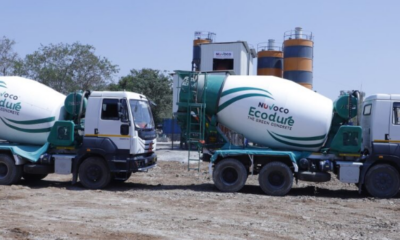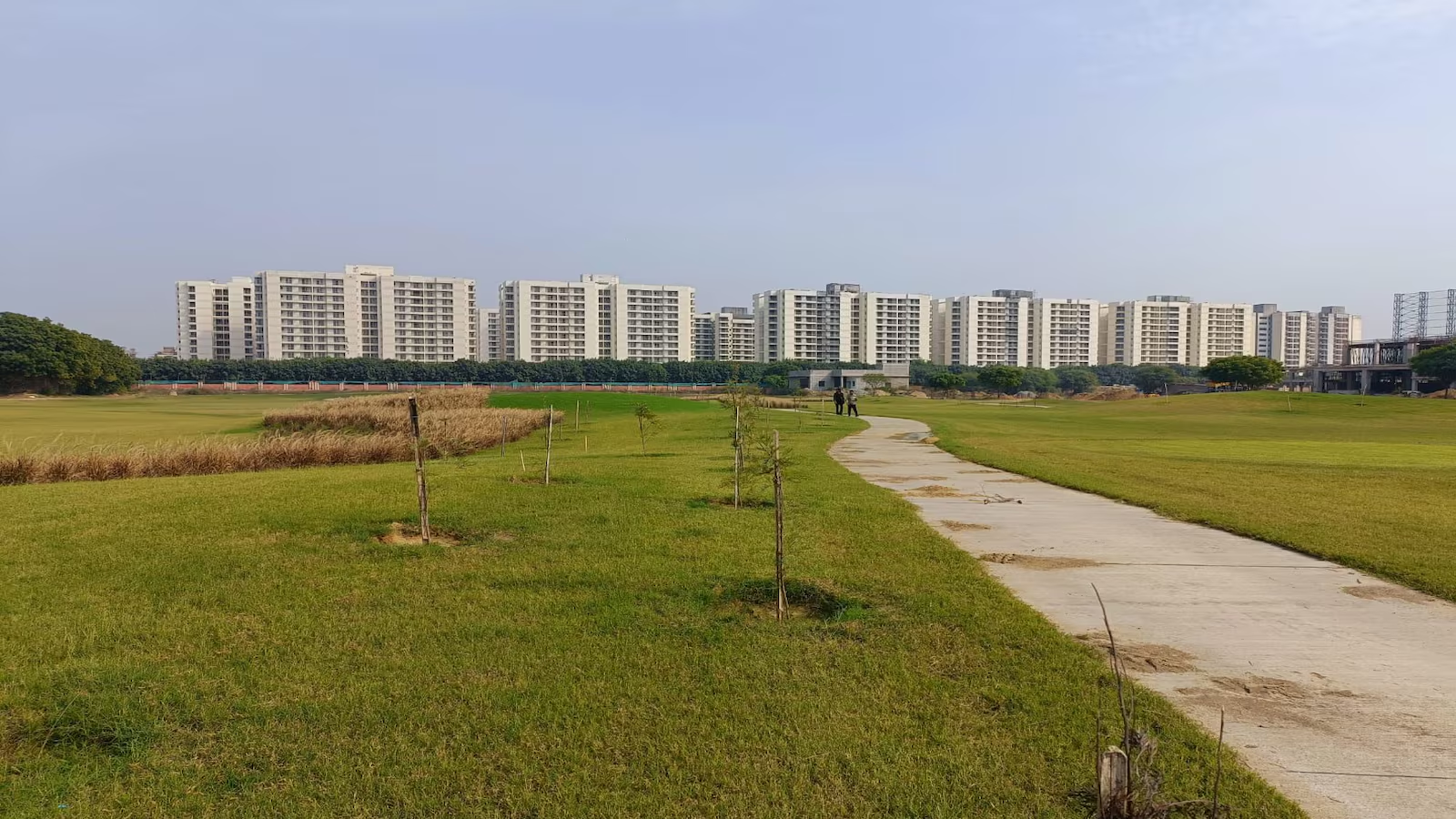Report
The importance of rainwater harvesting by Kishor Pate, CMD – Amit Enterprises Housing Ltd.


The following is the report by Kishor Pate, CMD – Amit Enterprises Housing Ltd.
Pune’s landlocked topography has made water a ultimately precious resource. Water crisis is becoming a serious issue both at the national and global levels, and in cities like Pune the situation has reached a flash point. The city is seeing a constant influx of migrant population seeking employment in the city’s several industries.
Simultaneously, shallow lands are fast getting covered with landfills, and this has been reducing the number of water bodies available to the city’s residents. Deforestation has been another prime reason for the compounded water scarcity. While forests are being rapidly leveled for new avenues of construction, rainfall patterns too are shifting and getting unpredictable.
In the coming years, the bulk of the global population will be shifting to urban locations. This calls for a rapid development in real estate, and will also bring with it a high demand for natural resources like water. Limited land necessitates the development of multi-storied residential buildings, and water is required for both the construction and maintenance of these building apart from providing for the daily necessities.
We know that the earth’s surface is 70% water. However, only a small portion of it is drinkable and mostly comes from fresh water sources like lakes, rivers and our underground water table. Rapid urban growth and rise in population will usher in a severely parched future in a scenario where water is needed for everything, ranging from farming to drinking to construction.
The only real solution available for regions like Pune is rainwater harvesting. Rainwater harvesting is getting more popular as a means to fight resource scarcity and is being increasingly practiced in both rural and urban areas. The process involves collecting, filtering and storing rainwater to meet many residential and industrial needs. The equipment too is simple and includes collection funnels, filter units and storage tanks.
Rainwater is the cleanest source of freely available potable water. Practiced in urban residential projects, rainwater harvesting will be able to meet almost 50% of the city’s water needs. Households as well as commercial buildings can save a lot on their water bills. Harvesting rainwater is not just about maximum utilization of a freely available resource but also about minimizing the impact of urban development on our natural surroundings. In fact, failure to harvest rainwater results not only in the obvious loss of a precious resource but also in heavy soil erosion.
The several advantages associated with rainwater harvesting include:
Reduced demand for ground water
The water supply in urban homes comes from reservoirs that are fed by lakes and rivers. Treatment plants and pumping station also pump out the ground water, gradually reducing the available amount. In several Indian cities, the ground water table has already exhausted itself and rainwater is the only available solution.
For a city like Pune that is seeing tremendous residential and industrial growth, water for non-drinking purposes can readily come from rainwater. Large volumes of it can be used for cleaning, washing, toilet flushing and gardening. Similarly, industries can use rainwater to meet their production needs.
Backup water supply
Rainwater harvesting can be insurance for times when the regular water supply has been compromised. With climate change taking a major toll on the availability of naturally available water, rainwater can be of use during times of drought. Pune and Mumbai, in particular, must resort to rainwater harvesting on a war footing to minimize their dependency on reservoirs.
Environment friendly
When a neighborhood starts using rainwater, the community as a whole will be able to fight the problems associated with runoffs, soil erosion and pressure on the drainage systems. Collecting rainwater would also mean reducing the chances of contamination that flows into our rivers and lakes.
Low-lying areas like Pune and Mumbai can also fight the chances of flooding by harvesting large volumes of rainwater. Rainwater harvesting, therefore, meets the needs of the environment and ensures that the city is less affected by chemicals that run off from our farms into our rivers.
Ease of implementation
A rainwater harvesting setup is easy to install and maintenance is not a big challenge. The purest form of water, rainwater also does not need very complicated purifying devices to meet our primary needs. Based on basic technologies of collection, filtering and storage, rainwater harvesting setups are worth the minimal initial expense and effort required to set them up in every way.
While the tools for rainwater harvesting can be used by anyone, there are some important facts to remember:
– Identification of catchment areas that include terraces, car parking, roads and other concrete surfaces
– Installation of gutters with filtration system that blocks debris on the outside
– Channels that ensure a smooth flow to the storage system
– Safety precautions against any kind of contamination, including the breeding of mosquitoes
Increasing support from the government
The incumbent Indian government has been rightly focusing on the water scarcity problem, and as a result has been facilitating several plans for rainwater harvesting. New apartment projects are now by law required to have rainwater harvesting systems in place and in several regions. With rainfall getting scantier every year, the government is looking to initiate special installations in residential societies, commercial buildings, educational institutions and other buildings. The increasing road coverage in the country also opens up an excellent avenue of rainwater collection for better use.
India’s Center for Science and Environment (CSE) is also creating programs to raise awareness for maximizing the use of rainwater harvesting across the country. It has been supporting several NGOs, consultancies and companies to educate people on what has been a traditional means of collecting and using rainwater for future purposes.
Today, rainwater harvesting should come automatically as a building standard. While builders are already getting aware, customers too should start asking for the same. In several areas, old building which were not integrated with harvesting systems should be reconstructed or retrofitted to support rainwater harvesting. This is by all means a vital measure that cannot wait longer.
-



 News3 weeks ago
News3 weeks agoKW Delhi 6 Mall Onboards New Brands
-



 News4 weeks ago
News4 weeks agoManasum Senior Living Launches IKIGAI GOA, A Senior Living Community in North Goa, in collaboration with Prescon Homes
-



 News3 weeks ago
News3 weeks agoCommercial Realty Gets Tech Savvy: Fast Construction, Enhanced Convenience
-



 News2 weeks ago
News2 weeks agoGodrej Properties Sells Rs 3k cr+ Homes of Godrej Zenith, Gurugram, within 3 days
-



 News4 weeks ago
News4 weeks agoBridging India Divide: Top 5 Tier- 2 Cities to Focus On
-



 News4 weeks ago
News4 weeks agoMultipoint Connection – A Definite Boon
-



 News3 weeks ago
News3 weeks agoRBI’s Status Quo on Key Policy Rates to Help Maintain the Real Estate Growth Momentum, Say Industry Stalwarts
-



 News1 week ago
News1 week agoOlive Announces Dhruv Kalro as Co-Founder





























